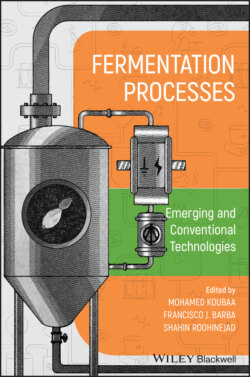Читать книгу Fermentation Processes: Emerging and Conventional Technologies - Группа авторов - Страница 15
1.1.6 Bioconversion
ОглавлениеA microbial cell can be used to convert or transform any substance into a value‐added product (Garlapati et al. 2016), a bit like conventional conversions of grape must into wine, wine into vinegar, or milk into yogurt. These transformations contribute to producing very valuable compounds in the pharmaceutical industry, such as antibiotics, vitamins, steroids, and prostaglandins. These conversions are based on the biochemical reactions of microorganisms used such as hydroxylation, dehydroxylation, O‐methylation, O‐demethylation, glycosylation, deglycosylation, dehydrogenation, hydrogenation, C‐ring cleavage of the benzo‐γ‐pyrone system, cyclization, and carbonyl reduction (Cao et al. 2015).
The bioconversion of compounds by microorganisms is much more advantageous than the conventional chemical transformation because the reactions can occur at low temperature and low pressure and without the addition of catalysts. To understand the different steps required to carry out a fermentation process, it is of paramount importance to understand first the microbial metabolism and how a substrate could be transformed by a microorganism to maintain its growth and the production of targeted compounds.
